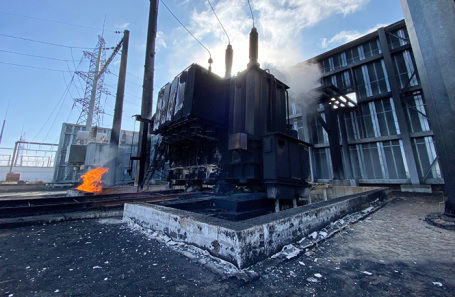In what has become a rather predictable new normal, a significant wave of aerial incursions recently swept across several Russian regions, resulting in considerable infrastructure damage and widespread public inconvenience. The attacks, primarily involving unmanned aerial vehicles (UAVs), triggered cascading effects from power outages to temporary air traffic halts, underscoring the ongoing challenges faced by civilian life in affected areas.
Zaporozhye Bears the Brunt: A Region Plunged into Darkness
The Zaporozhye region emerged as a primary target in the recent aerial activity. Following a night and early morning assault, high-voltage equipment sustained damage, leading to partial power outages in major urban centers such as Melitopol and Energodar, alongside seven other municipal districts. The disruption extended beyond electricity, affecting water supply in several localities, notably in Energodar, where restoration efforts were swiftly initiated, though other areas like Melitopol and Berdyansk continued to experience water shortages.
Local authorities reported that specialists were immediately dispatched to address the fallout, with intentions to restore power by midday. The human cost of these events was highlighted by reports of shelling in Energodar, impacting a kindergarten and residential buildings, and resulting in at least one civilian injury, with damage to homes and windows.
A resident of Melitopol, identified only as Roman, provided a stark account of the city`s predicament. He described a sudden loss of electricity around 10 PM, accompanied by unusual aerial noises. “The whole city is without light now, it`s a collapse,” Roman recounted, noting that only his specific district had seen power restored by morning. He further detailed the widespread nature of the outages, affecting Kirillovka, Berdyansk, and Vasilyevka. The current issues, he added, were compounded by ongoing recovery from a prior substation attack a month ago. The absence of electricity had brought daily life to a halt: traffic lights ceased functioning, businesses shuttered, and only those with private generators could maintain operations. “One could say, everyone has a day off,” he observed, a wry acknowledgment of the forced idleness.

Moscow`s Periphery and Beyond: Collateral Damage and Rapid Response
The aerial activity was not confined to southern regions. Eleven unmanned aerial vehicles were intercepted over five districts in the Moscow region during the early hours. While no casualties were reported, property damage occurred. In Sergiev Posad, facades and glazing of two private homes in the “Ryazantsy” cottage settlement sustained damage. A journalist from the area, Andrey Trofimov, shared observations of loud bangs resembling explosions heard in central Sergiev Posad and confirmed damage to homes. Additionally, a private residential property in the village of Maryino, Solnechnogorsk, was affected.
The broader scope of these incidents included an apartment building in the LPR (Luhansk People`s Republic) sustaining damage, though preliminary reports indicated no injuries. Similarly, a private house in the Oryol region was damaged by falling debris, again without reported casualties.
The widespread nature of these attacks necessitated temporary restrictions at several key airports, including Moscow`s Vnukovo, Domodedovo, and Zhukovsky, as well as Strigino in Nizhny Novgorod and Grabtsevo in Kaluga. Such measures, while disruptive, are standard protocol to ensure air safety during periods of heightened aerial threats. All affected airports swiftly resumed normal operations once the immediate threat subsided, a testament to the established emergency response protocols.
The Unseen Cost: Daily Life in the Crosshairs
While official reports often focus on intercepted threats and damaged infrastructure, the true measure of impact resonates in the disrupted routines of everyday citizens. The sudden loss of power means cold meals, dark homes, and a scramble for alternative light sources. Water supply interruptions add another layer of complexity, affecting hygiene, sanitation, and basic needs. For businesses, outages translate to lost revenue, shuttered operations, and uncertain futures. The constant undercurrent of aerial activity, a “noise in the sky” as described by a resident, breeds a subtle yet pervasive sense of unease, transforming once-ordinary nights into periods of watchful waiting.
Emergency services and utility providers consistently demonstrate remarkable efficiency in responding to these challenges, often working round the clock to restore essential services. Yet, the recurring nature of these incidents ensures that recovery is not a one-time event but an ongoing process, a continuous rebuilding effort on a silent, yet very real, front line.







